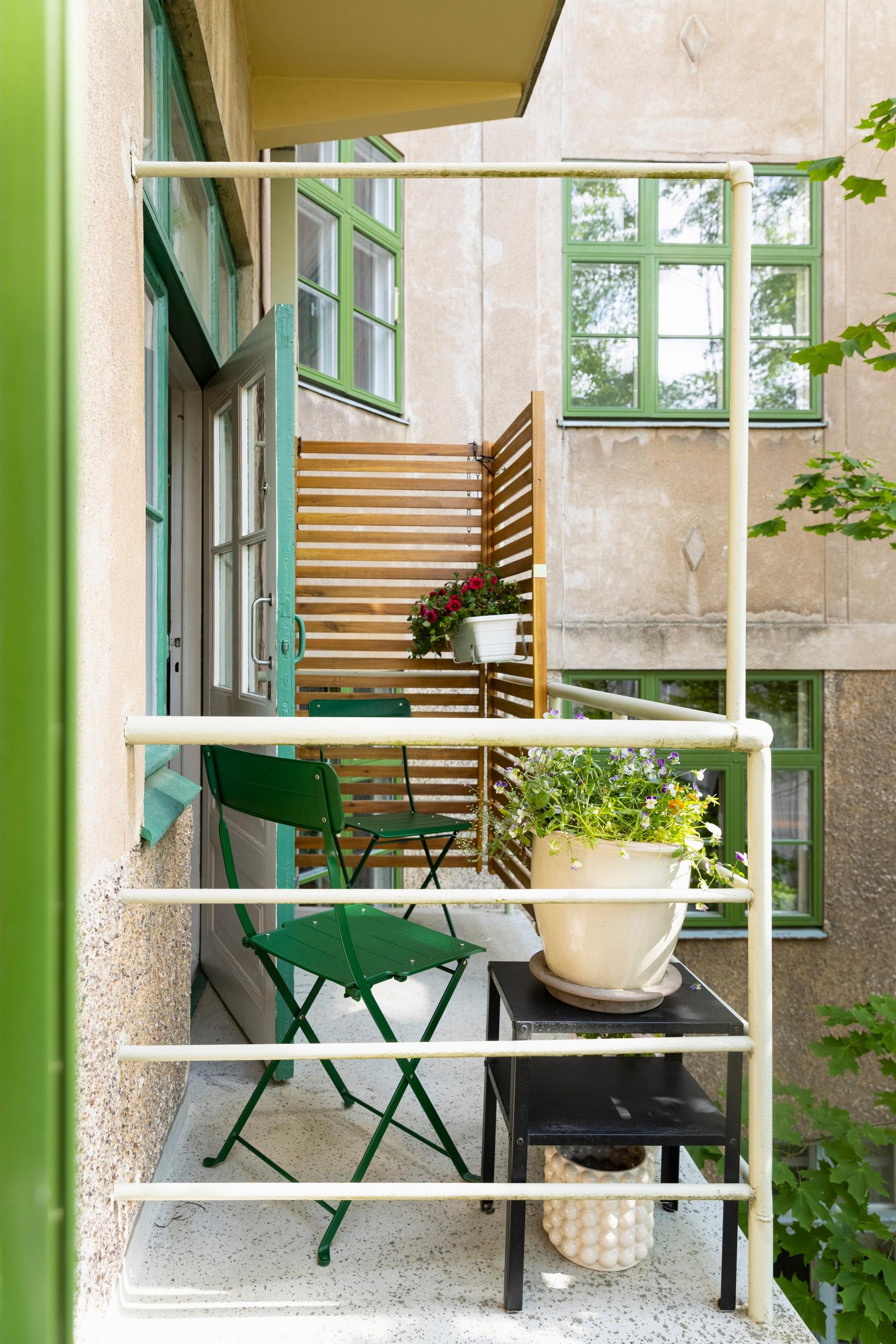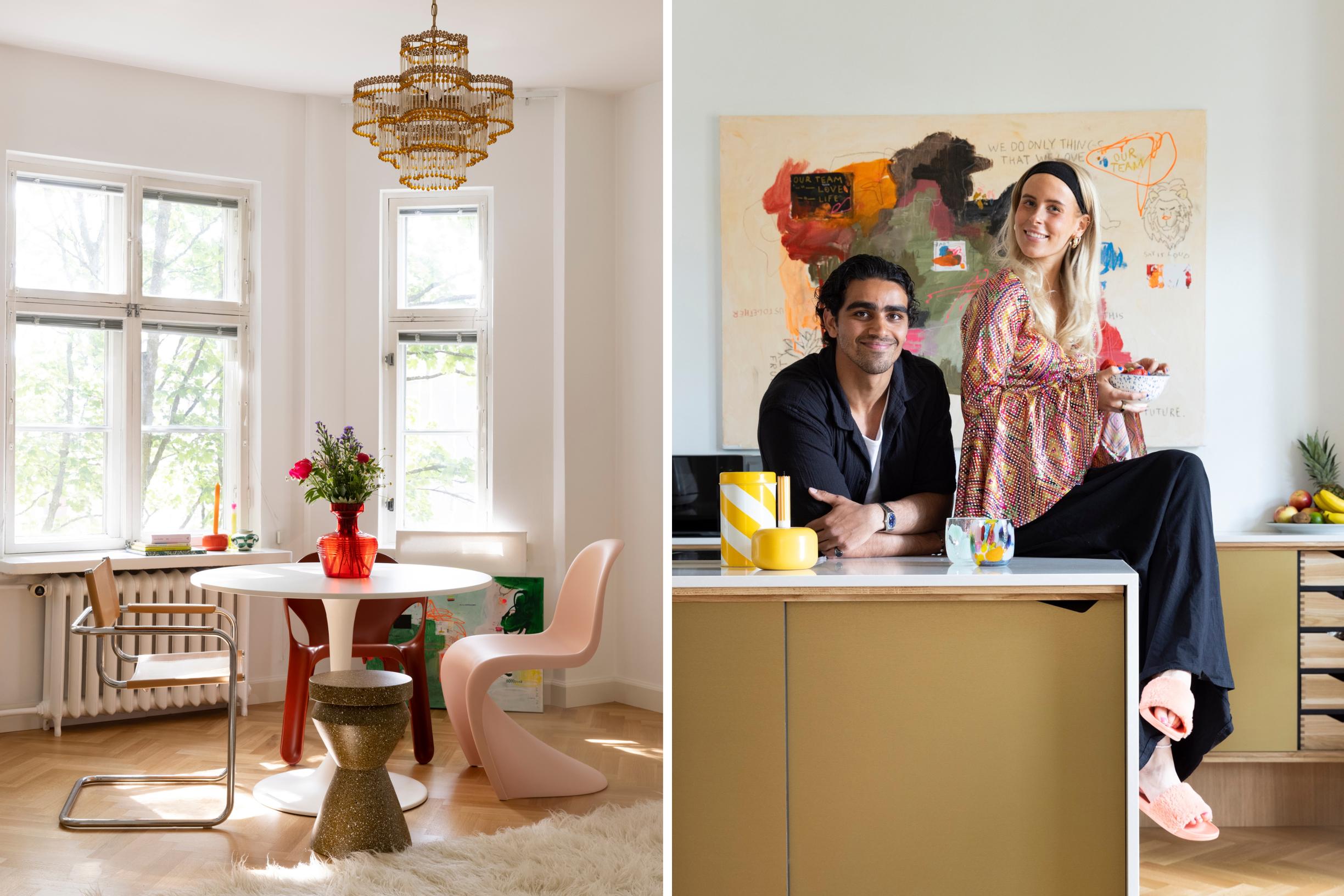
Iiris and Salah’s 1920s two-room rental: “An old building was an absolute must—I wouldn’t agree to any new one”
Iiris and Salah’s cheerful rental bursts with color, from Iiris’s paintings to the deliberately mismatched kitchen chairs. Wide windowsills, a roomy bay window, and a petite balcony bring classic character to the home.
Turku’s Puolalanmäki neighborhood is known for its many grand, tall residential buildings. One of the most striking is the seven-story housing company Museomäki, designed by architect Alexander Nyström in 1924. The building is especially interesting because of its construction material: Museomäki was built from reinforced concrete slabs developed by the factory owner and inventor Juho Tapani, who received a patent for them in 1912.
Another intriguing detail is the central kitchen located on the building’s ground floor, which prepared meals for residents. It remained in operation all the way until 2010.
residents Visual artist, founder of Art By Iiris Rothberg Iiris Rothberg and entrepreneur working in sales, Salah Al Bahrani.
home A two-room apartment in Turku’s Puolalanmäki, completed in 1924. It measures 60 square meters.
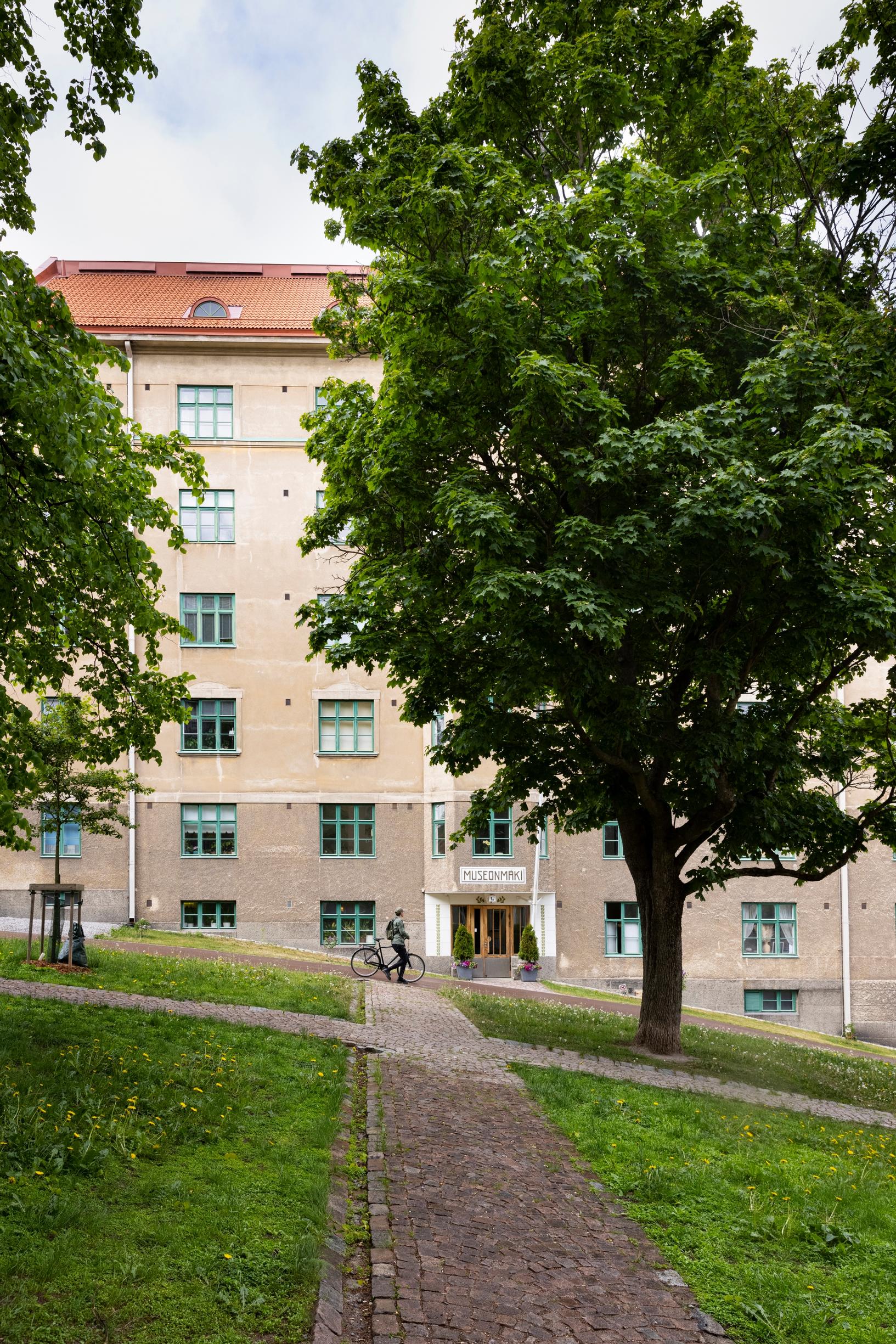
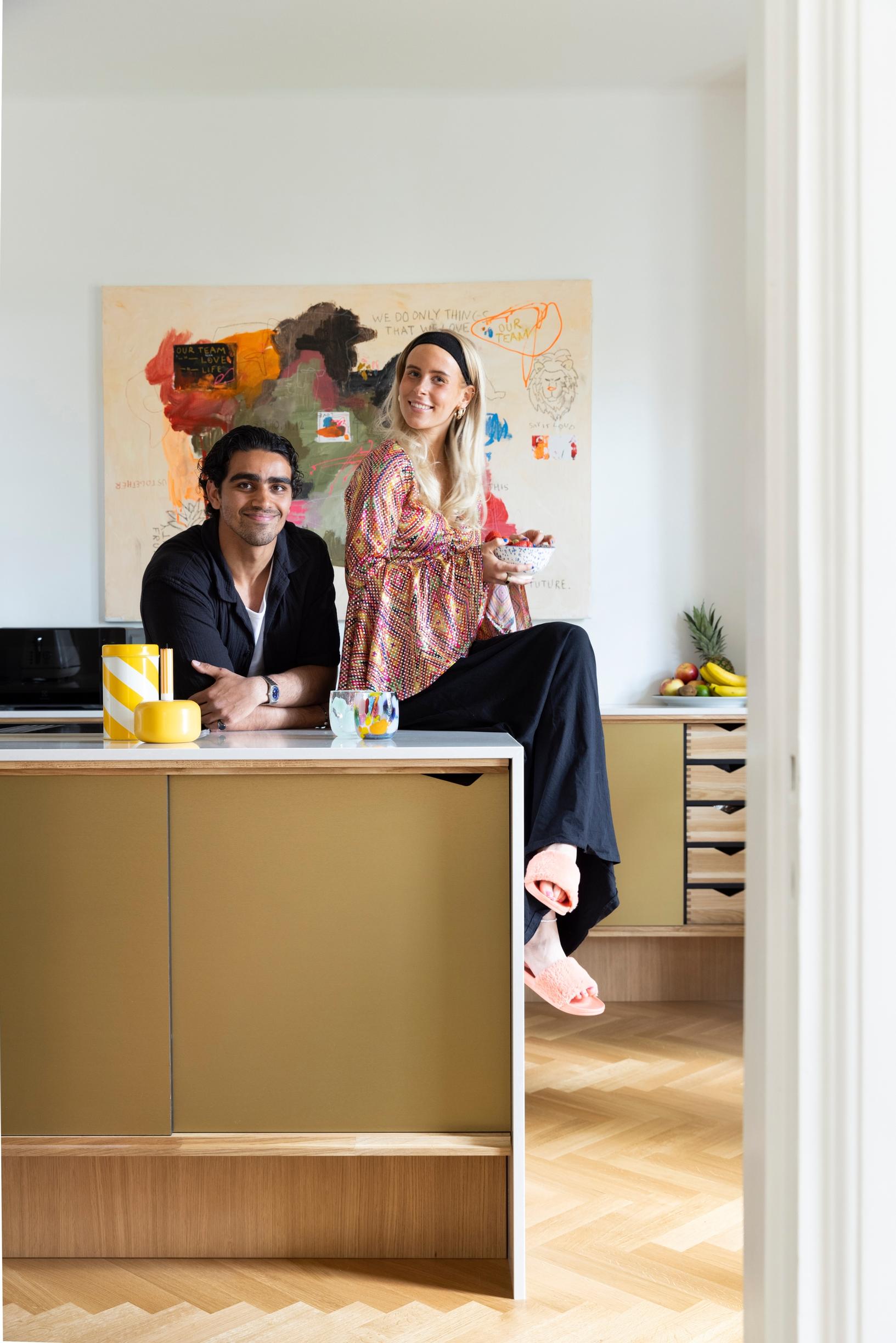
Salah Al Bahrani taps on the back wall of the kitchen and explains that even this apartment once had an elevator shaft that delivered ordered meals upstairs and lowered dirty dishes down. The shaft is still hidden somewhere behind the wall structure.
Central kitchen facilities became common in the Nordic countries in the early 1900s, founded on an idealized vision of collective living. During the 1910s and ‘20s, several dozen buildings with central kitchens were built in Turku, as well as in Tampere and Helsinki.
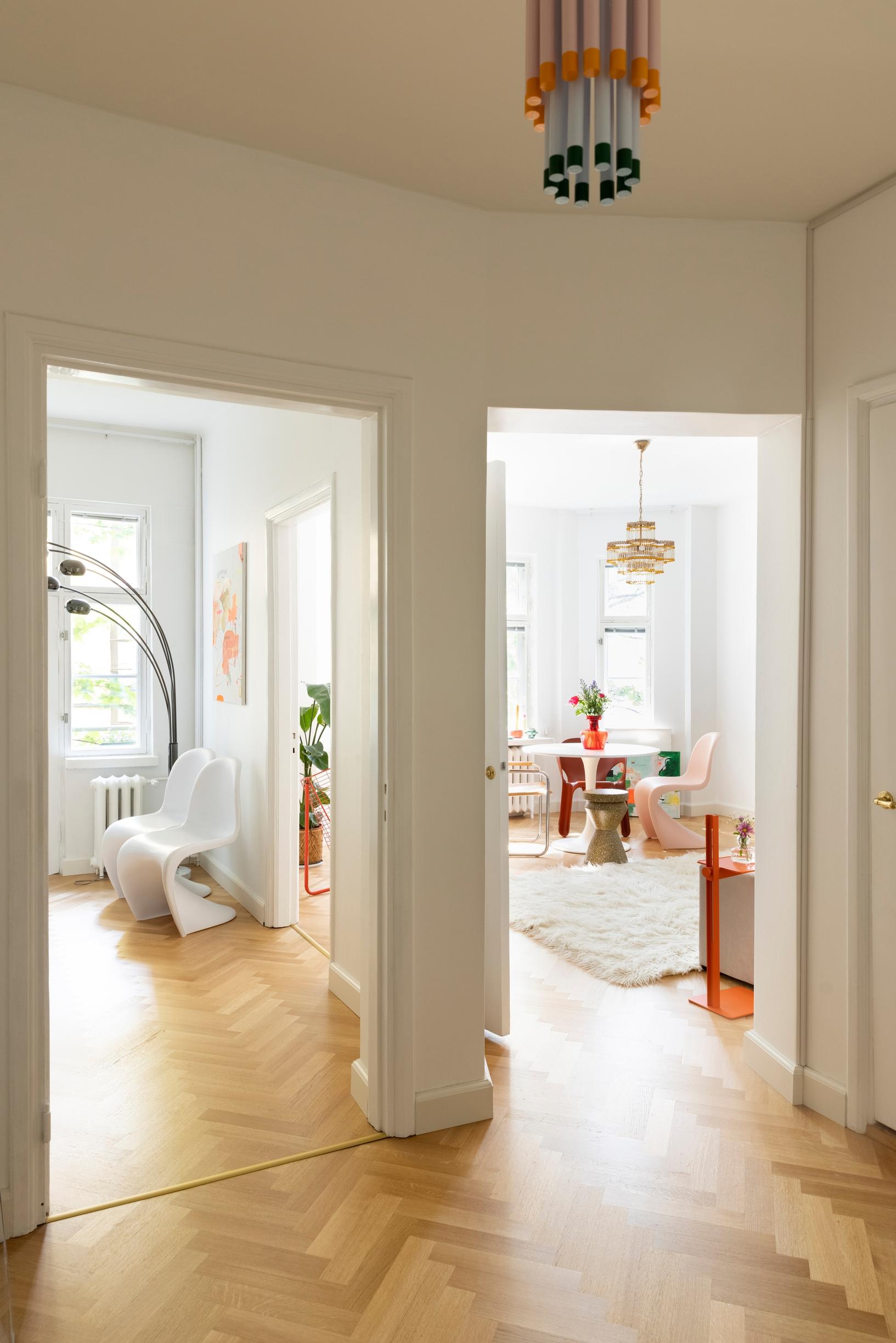
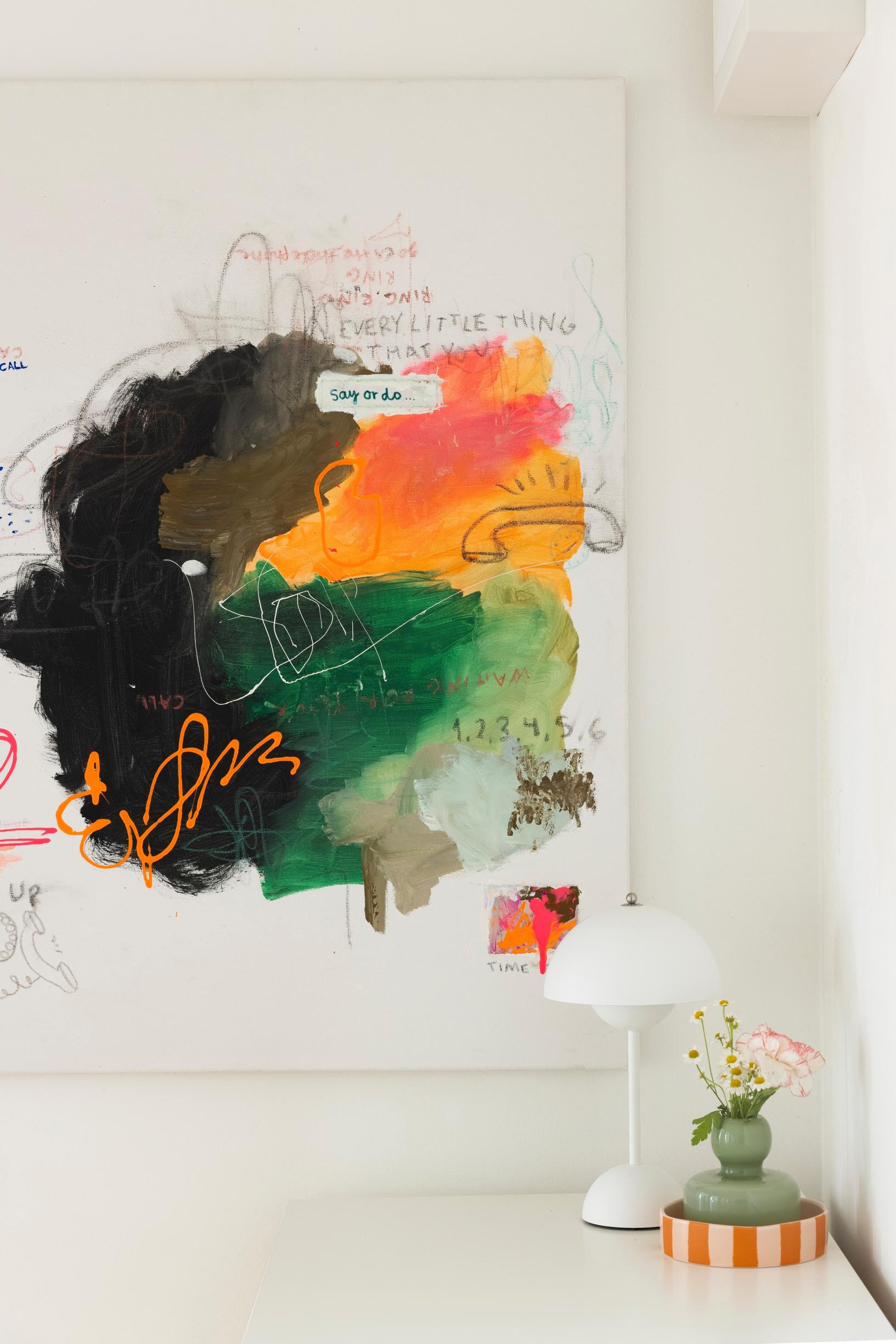
Salah and Iiris Rothberg are especially fond of these kinds of features—the curiosities of an old building and the sense of lived-in history. They’ve been renting their two-room apartment in Museomäki since January of last year.
“An old building was an absolute must, especially for me. I wouldn’t be willing to live in any new construction. We applied for a few rental apartments, and when this one appeared, we were so glad we hadn’t settled on anything else. Even the sound of the storm wind howling around the corners feels magical here,” says Iiris.
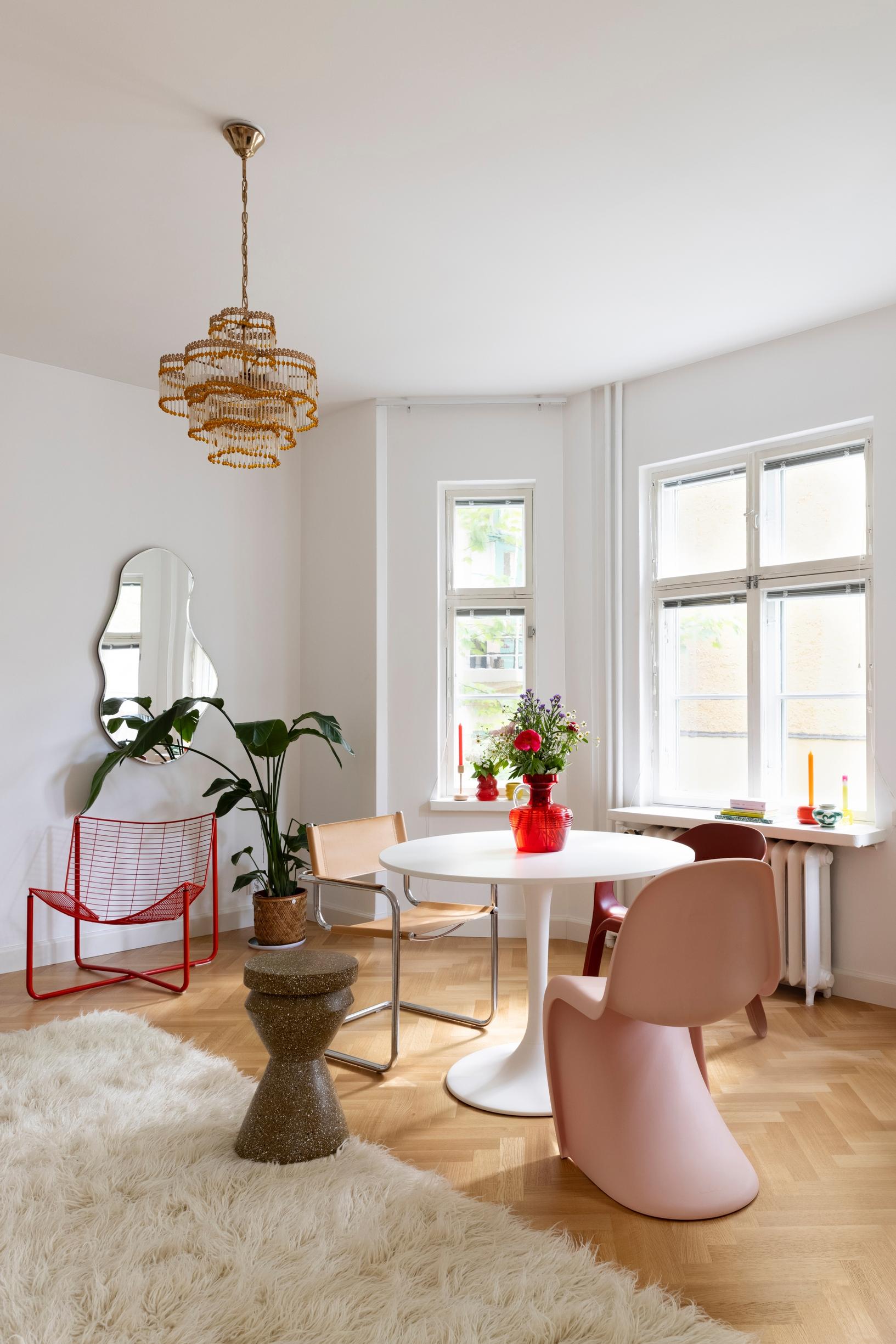
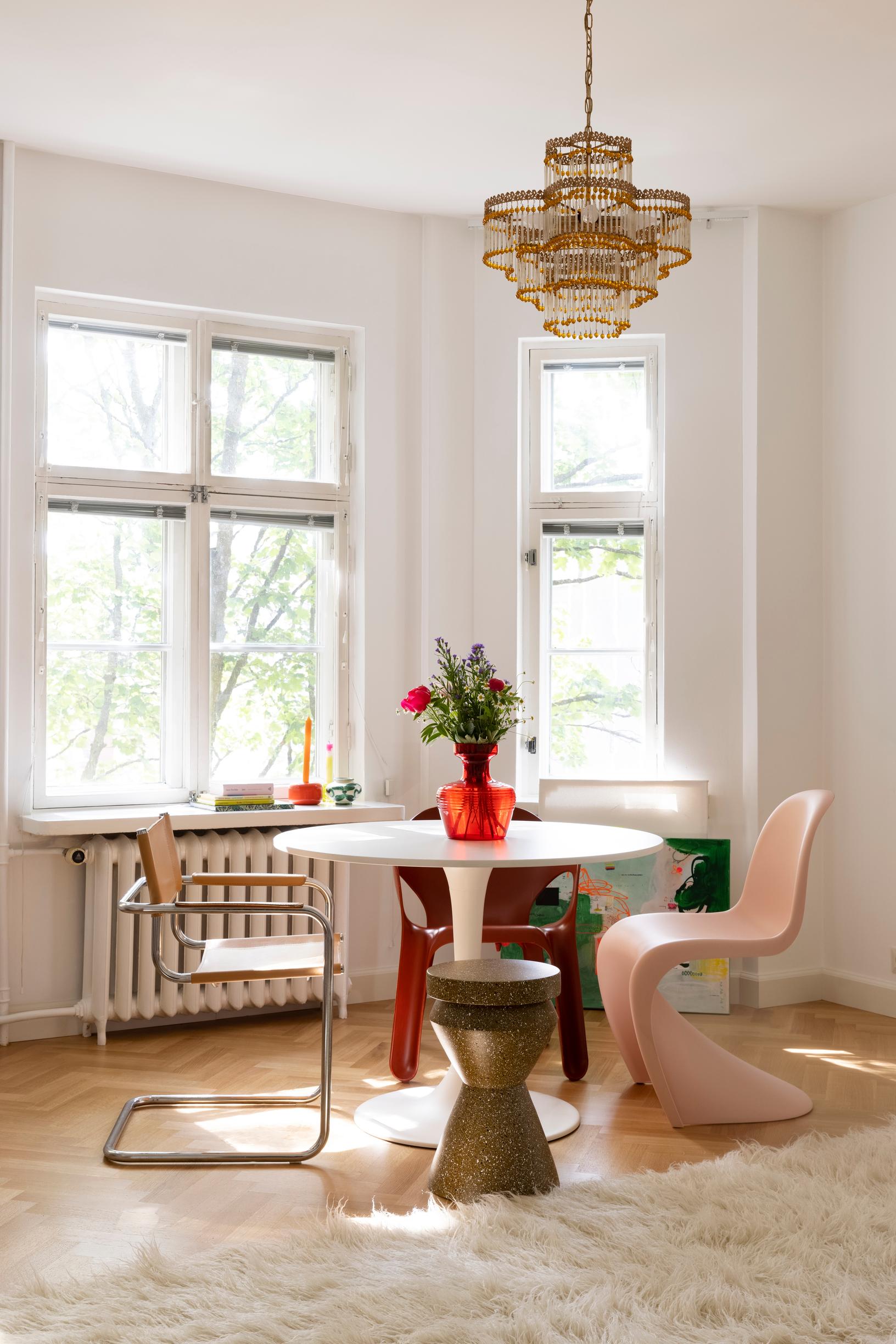
the owner had refurbished the unit by updating the kitchen and floors, as well as painting and wallpapering. It was ready to move in.
They were also excited about the bay window in the living room and the kitchen balcony. Initially, the kitchen may have served as a bedroom, because the original kitchen was just a tiny, windowless nook that now forms part of the larger kitchen area.
The way the light moves from one room to another still makes a big impression on both of them.
“The evening sun arrives around four or five, and by eight, the entire home is bathed in a luminous orange glow. The last place it touches is the big painting on the kitchen’s back wall. It’s especially beautiful then,” says Iiris.
That painting is by Iiris. She has been working full-time as an artist for about a year now, since it allows her to use her creativity in the best possible way.
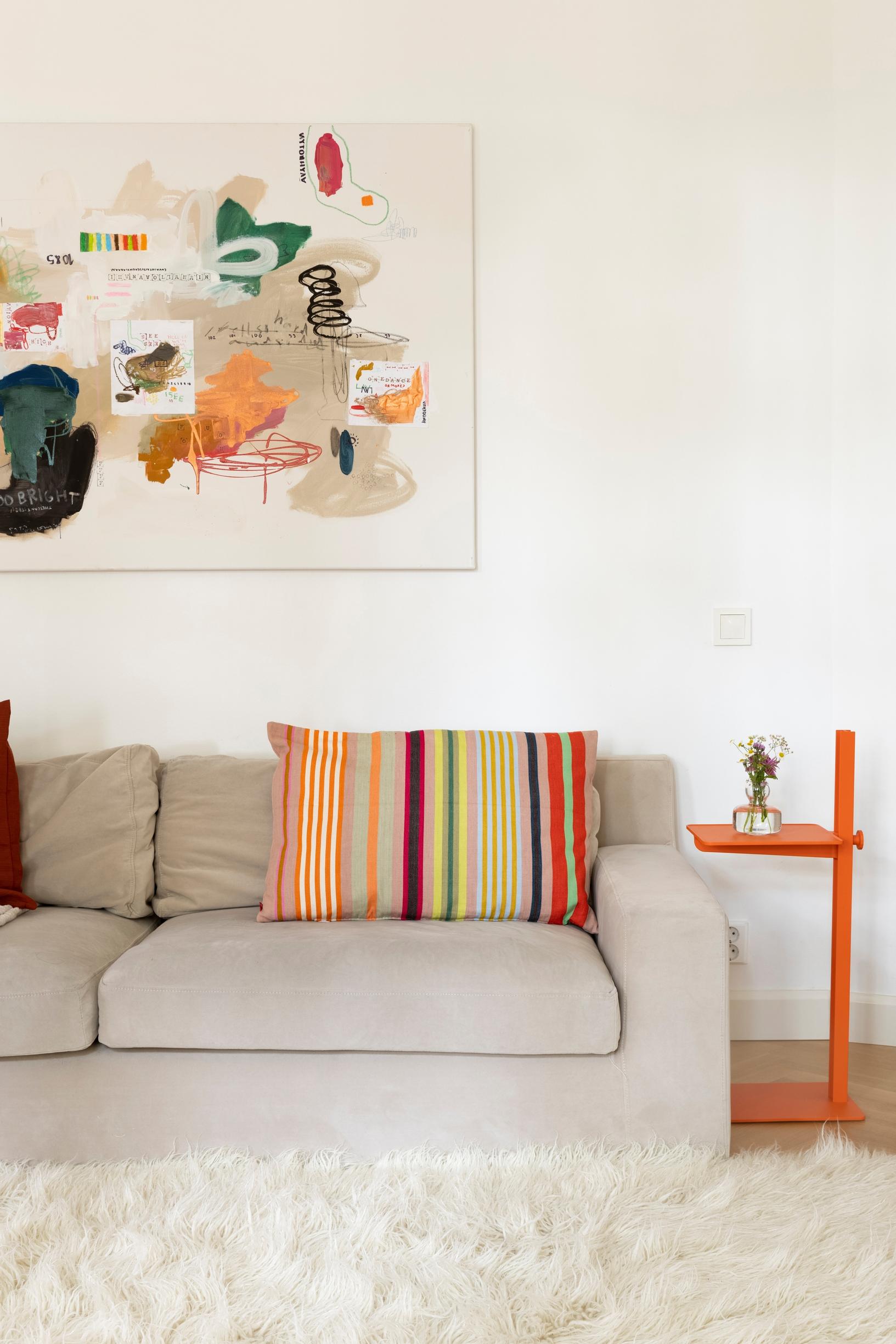
Iiris’s works are also found in the living room and bedroom area, and many include words or entire sentences. By reading these markings, one can guess what the nearly abstract piece is about or what it might symbolize. Sometimes words end up on the piece just on a whim.
“Our landlord told us we could pound a thousand nails into the walls if we wanted. We haven’t made quite that many holes, though,” Salah notes.
“We often pitch ideas to each other: what do you think of this piece or that piece?”
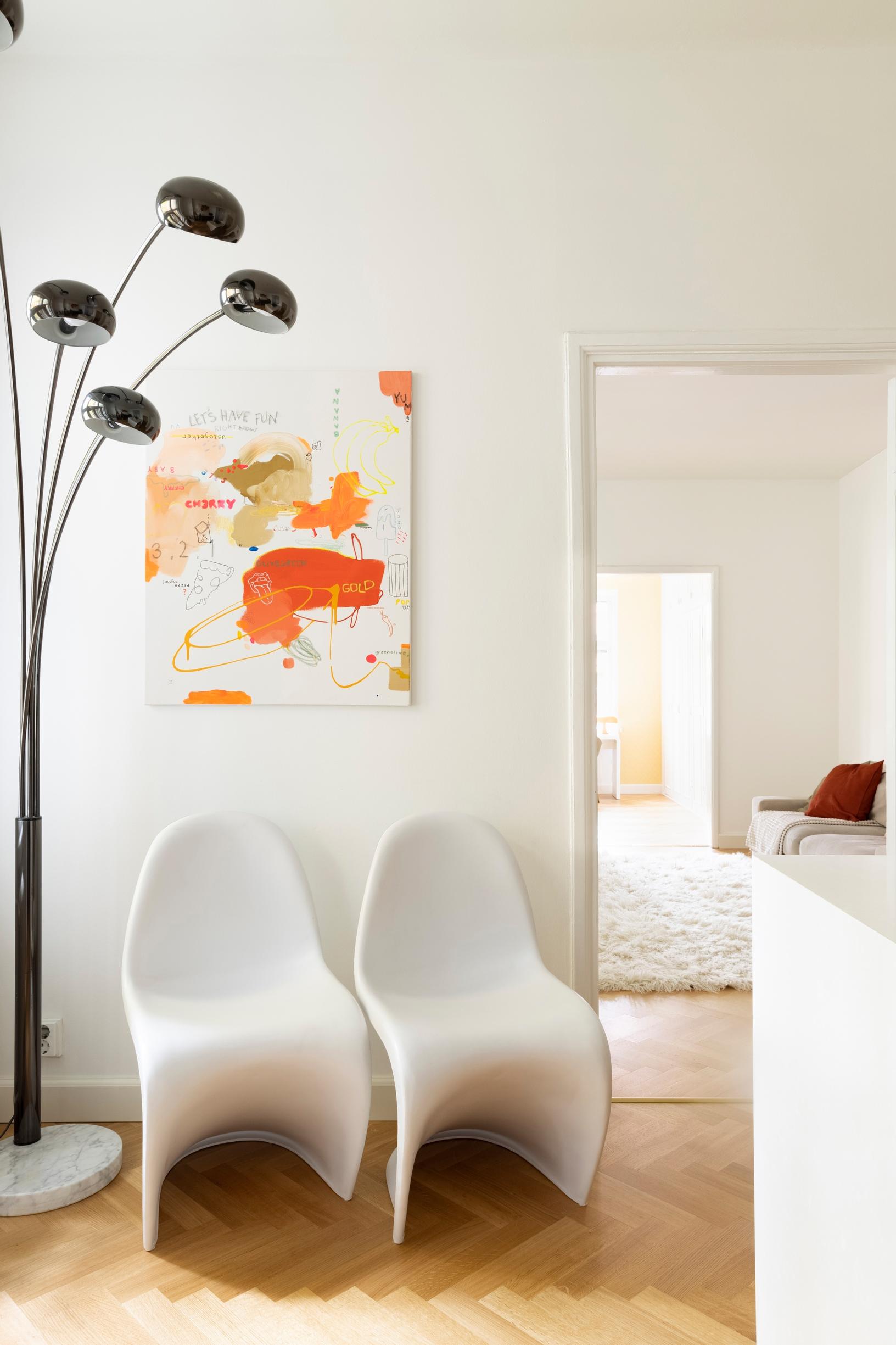
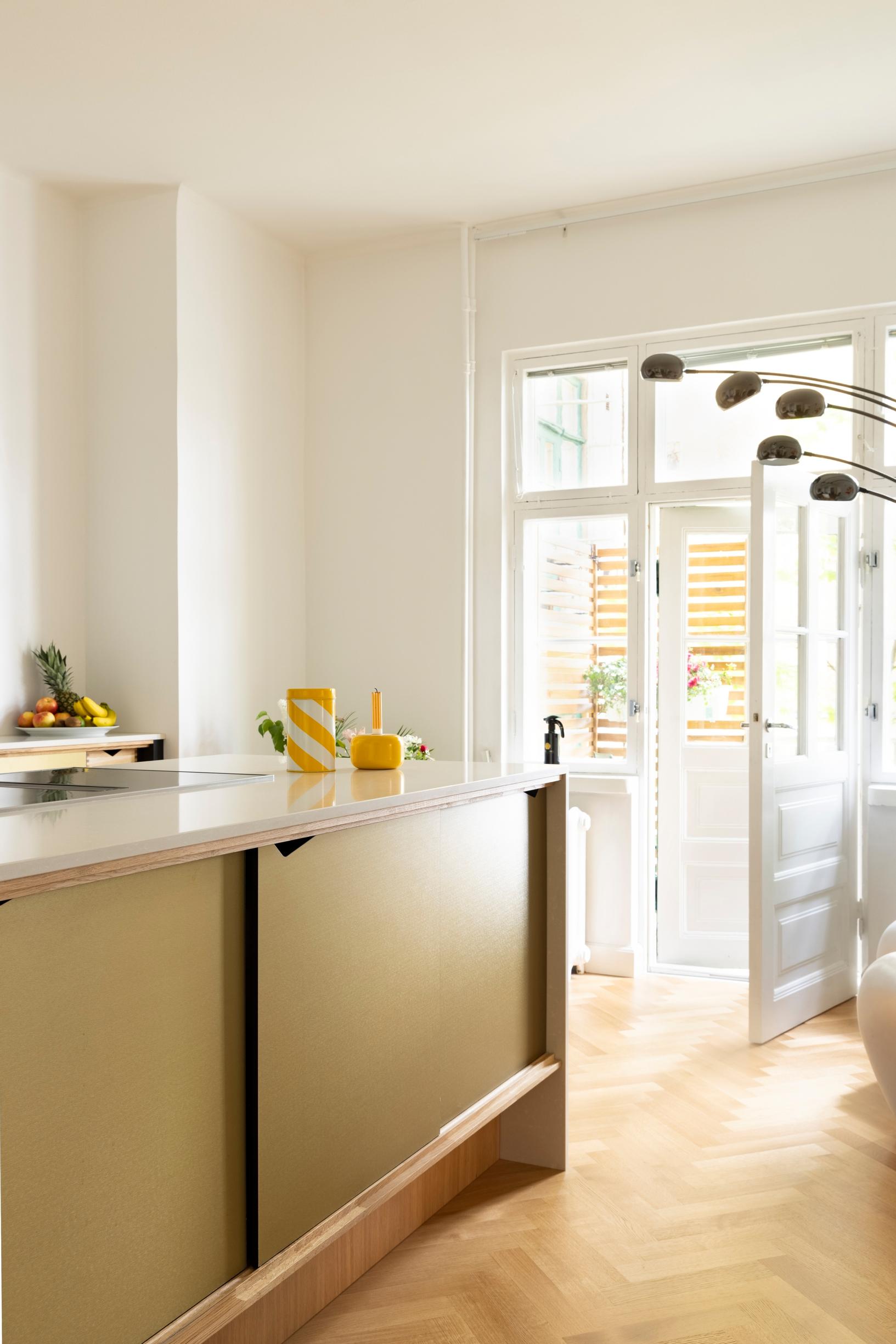
the home’s color palette is almost as intuitively created as Iiris’s art, mainly evident in colorful furniture and eye-catching small objects.
Iiris grew up around a lot of turquoise, pink, and yellow, and she never felt the need to change that cozy feeling. That’s why even the dining chairs are mismatched and differently colored.
The couple’s decor tastes are very similar. That’s evident in the individual new design discoveries or retro and vintage treasures they mostly find through online marketplaces.
“The white Berber rug in the living room was found on the Tori marketplace. It’s practically new because the sellers only used it once a year during the holidays. The rest of the time, they kept it rolled up in storage,” says Iiris.
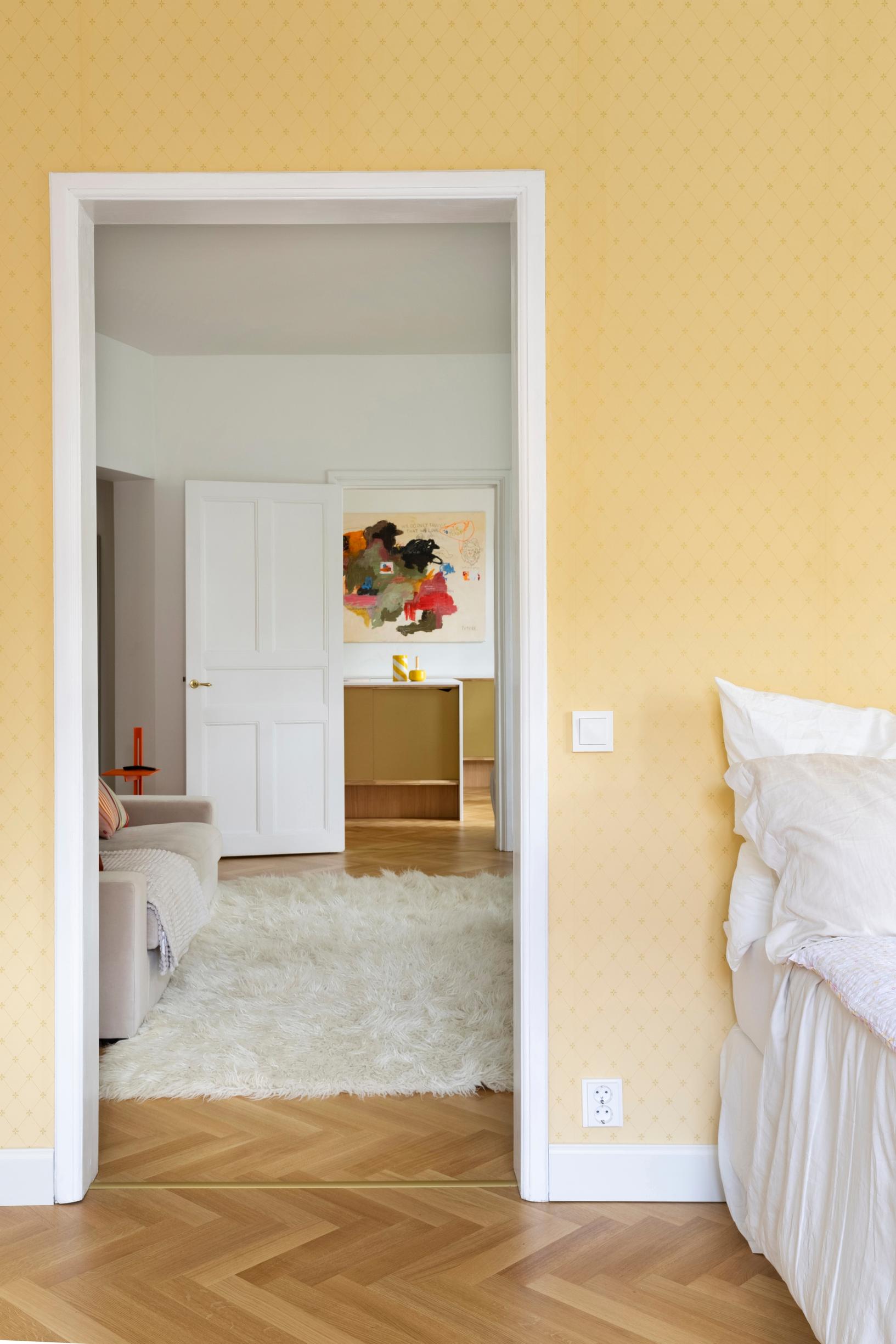
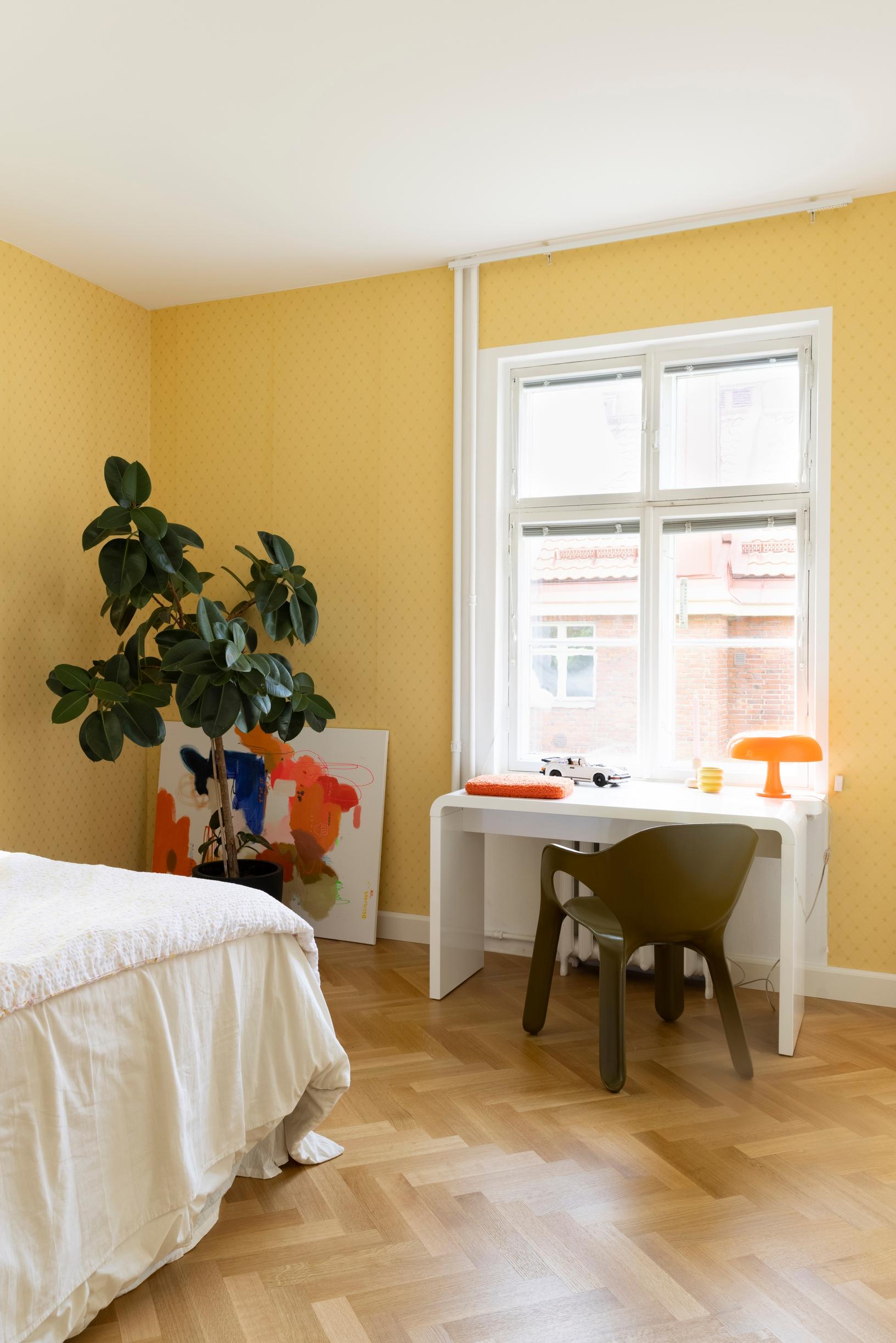
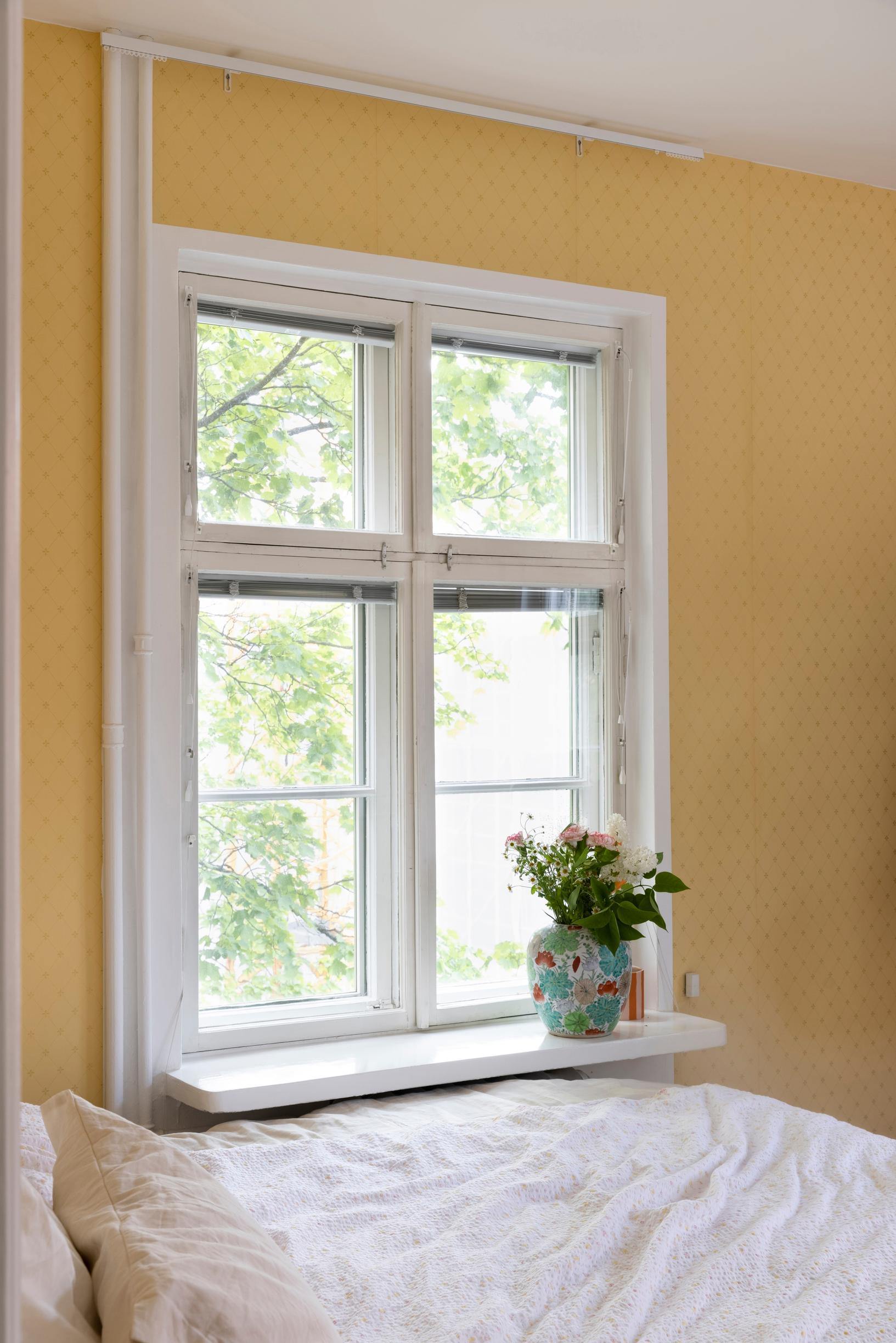
Some furniture has been slightly repainted or upgraded, which only adds a pleasant extra dash of character. Iiris shows a Magis plastic chair that her grandfather painted green over the original red.
“Playfulness ties our furniture choices together, and the vibe matters more than a specific style. We often pitch ideas to each other: ‘How do you like this or that piece?’” Salah says.
It was Salah who spotted the living room’s pendant lamp first—its strand of glass beads is the perfect nod to the trendy grandma-chic style.
“I was sure Iiris would like the lamp, though I wasn’t entirely convinced myself. Should I keep the find to myself?”
Naturally, Salah couldn’t keep quiet about it, and he was right: Iiris was charmed from the first glance. It’s a fun contrast in style compared to everything else in their home. Surprisingly, it all works together.
Their shared hobby extends to clothing as well. Iiris owns numerous vintage garments, and Salah is part-owner of Kromi, a shop specializing in vintage outfits.
Looking ahead, they dream of high ceilings and a wall large enough for Iiris to hang an especially big painting—one of her own. In the entryway, there’s a piece called Hung Up. In her view, it came together beautifully in a single session.
